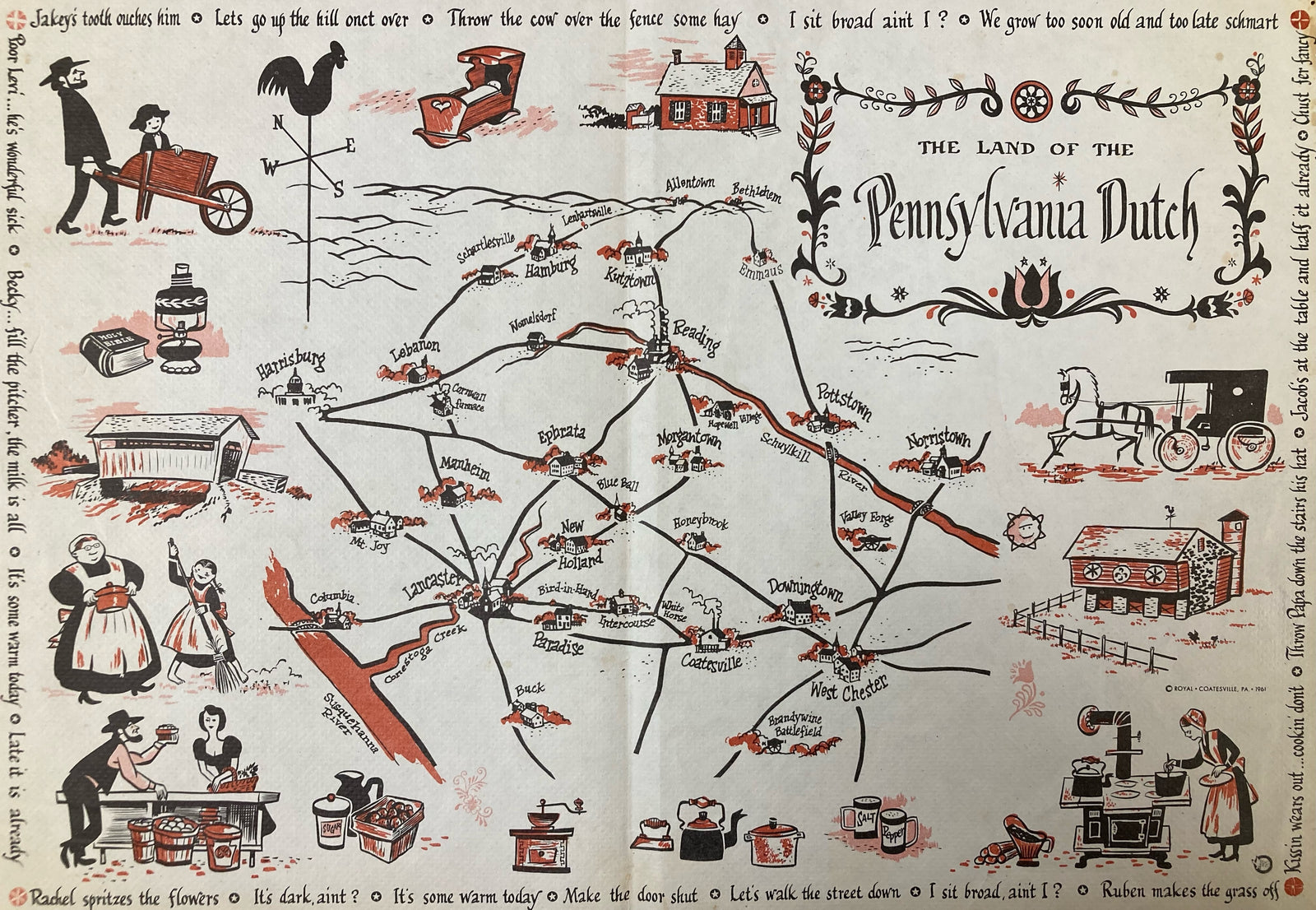Questions that we often get at Stoltzfus Meats include: "are you Amish?" And: "are you Pennsylvania Dutch?" Although all Amish are descended from the Pennsylvania Dutch, there are differences between the two groups. The Pennsylvania Dutch, also known as Pennsylvania Germans, are a group of German-speakers who settled in Pennsylvania in the 17th and 18th centuries. Despite their name, they are not Dutch but rather of Swiss and German descent, with their language and culture heavily influenced by their European roots. (The word "Dutch" is a misnomer and comes from an anglicized version of the word "Deutsch," meaning "German.")
A Long and Rich History
The Pennsylvania Dutch first arrived in Pennsylvania in the late 1600s, attracted by William Penn's promise of religious freedom and fertile land. They came from various regions in Germany, France, and Switzerland, including the Palatinate, Alsace-Lorraine, the Bernese Oberland, and Baden-Wurttemberg.
The Pennsylvania Dutch brought with them their language, also known as Pennsylvania Dutch, which is a dialect of the German language. Pennsylvania Dutch was the primary language spoken in Pennsylvania Dutch communities until the early 20th century, when English became more widely used. Many communities still speak Pennsylvania Dutch as their first language, however, including the Amish.
The Pennsylvania Dutch are known for their distinctive culture, which includes their language, food, folk art, and religious practices. They are famous for their hearty cuisine, which features dishes like shoofly pie, scrapple, and chow-chow. They are also known for their distinctive hex signs, which are painted on barns and other buildings and were believed to bring good luck.
Amish versus Pennsylvania Dutch: Different or the Same Thing?
Religion is an important aspect of Pennsylvania Dutch culture, with the majority of the community belonging to the Anabaptist faith, which includes groups like the Amish, Mennonites, and Brethren. These groups practice a simple and traditional way of life, based on their interpretation of the Bible. There are also Pennsylvania Dutch who are not of the Anabaptist faith. Many local Lutheran, Reformed, and Schwenkfelder congregations in Berks County maintain a Pennsylvania Dutch identity, for example. So, while Anabaptists in Pennsylvania are almost always of a Pennsylvania Dutch background, to be Pennsylvania Dutch does not automatically equate with being Anabaptist.
Famous Americans of a Pennsylvania Dutch Background
The Pennsylvania Dutch have made significant contributions to American culture, particularly in the areas of agriculture, crafts, and folk art. They are renowned for their skill in woodworking, quilting, and basket weaving, and their products are highly sought after by collectors and enthusiasts. They also are known for their unique cuisine, reflected in products like hamloaf, scrapple, and shoofly pie.
A surprising number of famous people have come from the ranks of the Pennsylvania Dutch, given their relatively small population. Famous figures with a Pennsylvania Dutch background include Robert Bork (Judge), President Dwight D. Eisenhower (34th President of the United States), Clark Gable (Actor), Gene Hackman (Actor), Milton Hershey (Chocolatier), Jimmy Hoffa (Former Head of the Teamster's Union), Elon Musk (Entrepreneur), Gwyneth Paltrow (Actress), Major Richard D. Winters (Army Officer), Jonathan Taylor Thomas (Actor), Jonathan Groff (Actor), Lauren Groff (Writer), John Updike (Writer), and Thomas Wolfe (Novelist), to name but a few.
The Pennsylvania Dutch are a unique and fascinating group of people with a rich cultural heritage. Despite their name, they are not Dutch but rather of German descent, and they have made significant contributions to American culture through their language, cuisine, folk art, and religious practices. To find out more, come visit us!


1 comment
My Mother was Pennsylvania Dutch, from Sugar Valley, PA. She left the area after she graduated from high school and married my Father.
Her family name was Heggenstaller.
I only became interested in my PA Dutch heritage recently; my Mom never elaborated on it; I don’t think she had a lot of fond memories of growing up in Eastville.